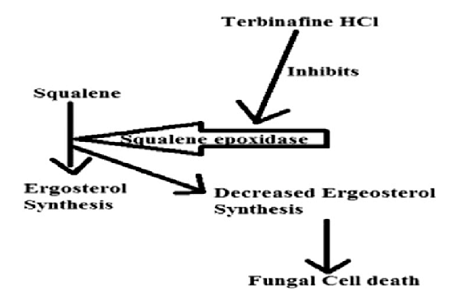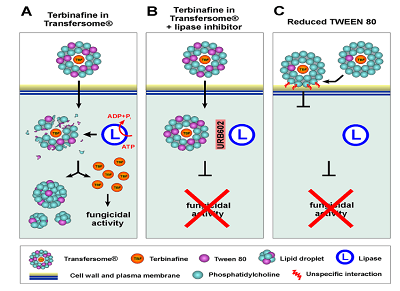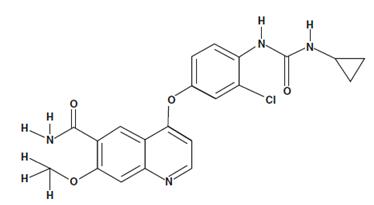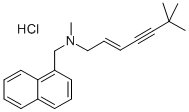Antifungal performance of Terbinafine hydrochloride
Dec 12,2019
Description
Terbinafine hydrochloride is a synthetic allylamine antifungal with a broad spectrum and used to treat dermatophyte infections of the toenail/fingernail, ringworm and jock itch[1].
It was successfully developed by Novartis Pharmaceuticals in the 1980s and first listed in the UK in 1991. In 1996, it was approved by the US FDA as an OTC drug, and it was listed in the US in the same year. Currently, it is sold in more than 90 countries around the world. It can specifically disturb the late stage biodegradation of fungal sterols, selectively inhibit the activity of squalene epoxidase of fungi, and hinder the epoxidation reaction of squalene in the process of fungal cell membrane formation, thereby reaching killing or Inhibits the action of fungi. It is suitable for the treatment of cutaneous candidiasis, such as hand sputum, athlete's foot, femur, body lice and tinea versicolor. It is also the best medicine for treating nail fungus [2].
Antifungal performance
In the current scenario, fungal infections are tremendously widespread. Over billions of people are diagnosed each year with either topical or severe systemic fungal infections. Although, antifungal drugs are effective in treating fungal infections, but they are associated with severe toxicities like liver damage or they may affect estrogen levels or may cause allergic reactions. For example, the antifungals with azole groups are known to have caused anaphylaxis. Terbinafine Hydrochloride (TH) is a potent antifungal agent of the allylamine class which selectively inhibits fungal squalene epoxidase. (scheme 1) It has a broad-spectrum activity against yeast, fungi, molds, and dermatophytes and is indicated for both oral and topical treatments of mycoses [4].

Scheme 1 Mechanism of action of Terbinafine Hydrochloride.

Scheme 2 The working mechanism of Terbinafine Hydrochloride in TFVs
Terbinafine interferes with fungal ergosterol biosynthesis by inhibiting squalene epoxidase in the fungal cell membrane. This leads to a deficiency of ergosterol and an intracellular accumulation of squalene, thus disrupting the fungal membrane function and cell wall synthesis, and resulting in fungal cell death [5].
The Transfersome® is a lipid vesicle, which contains 15 mg/ml terbinafine, membrane softeners, such as Tween 80, to make it ultra-deformable. The working mechanism was shown in scheme 2. (A) Terbinafine-loaded Transfersome® vesicles (TFVs) contain Tween 80 (purple structures) at high concentration. Tween 80 reduces unspecific interaction with the cell wall and allows extreme deformation of the vesicle membrane, thereby allowing entry of intact TFVs. Once inside the cytoplasm, ATP-dependent cytosolic lipases attack the TFVs and might metabolize Tween 80. This results in collapse of the Transfersome® membranes and the formation of lipid droplets. The digestion of the Transfersome® membranes releases terbinafine in the fungal cell. (B) In the presence of a lipase inhibitor, lipases cannot release the antifungal. Consequently, terbinafine-loaded TFVs are no longer cytotoxic. (C) At lower levels of Tween 80 (phosphatidylcholine to Tween 80 ratio of 20:1 shown here), terbinafine-loaded TFVs enter at much lower rates. Consequently, the vesicles are not degraded and are not cytotoxic.
References
[1] https://www.sigmaaldrich.com/catalog/product/sigma/t8826?lang=en®ion=US
[2] https://www.chemicalbook.com/ChemicalProductProperty_CN_CB9767492.htm
[3] https://patient.info/medicine/terbinafine-for-topical-use-lamisil
[4] Bharti Gaba etc., Nanostructured lipid carrier system for topical delivery of terbinafine hydrochloride, Bulletin of Faculty of Pharmacy, Cairo University (2015) 53, 147–159
[5] https://alviziahealthcare.com/ATMOFINE.html
- Related articles
- Related Qustion
- Terbinafine Hydrochloride Cream: Indications, Usage and Adverse Reactions Dec 16, 2024
Terbinafine Hydrochloride Cream is an FDA-approved antifungal medication used for the treatment of topical skin fungal infections such as tinea pedis, ringworm, jock itch, lichen planus, and candida skin infections.
- How to increase the solubility of terbinafine hydrochloride Dec 14, 2023
The poor water solubility of terbinafine hydrochloride leads to reduced oral bioavailability, so attempts were made to improve the solubility of terbinafine hydrochloride by using hydrotropic solubilisation technique.
- What does Terbinafine Hydrochloride treat? Nov 21, 2023
Terbinafine is an oral antifungal agent used to treat fungal infections of the hair, nails, and skin. It is also used to treat fungal infections of the scalp follicles in children at least 4 years old.
Pivaldehyde is an example of an aldehyde with the tertiary-butyl group (with 3 methyl groups), attached to the carbonyl (C=O) [1].....
Dec 12,2019Chemical ReagentsLenvatinib (LenvimaTM) is a multitargeted receptor kinase inhibitor that inhibits the kinase activities of vascular endothelial-derived growth factor receptors.....
Dec 13,2019InhibitorsTerbinafine Hydrochloride
78628-80-5You may like
Terbinafine Hydrochloride manufacturers
- Terbinafine Hydrochloride
-

- $0.00 / 1barrel
- 2025-11-19
- CAS:78628-80-5
- Min. Order: 1barrel
- Purity: 99%
- Supply Ability: 1000kg
- Terbinafine Hydrochloride
-

- $0.00 / 1kg
- 2025-11-19
- CAS:78628-80-5
- Min. Order: 1kg
- Purity: 99%
- Supply Ability: 1000
- Terbinafine Hydrochloride
-

- $0.00 / 1Kg/Bag
- 2025-11-19
- CAS:78628-80-5
- Min. Order: 1KG
- Purity: 98%-102%;CP
- Supply Ability: 10 Tons






